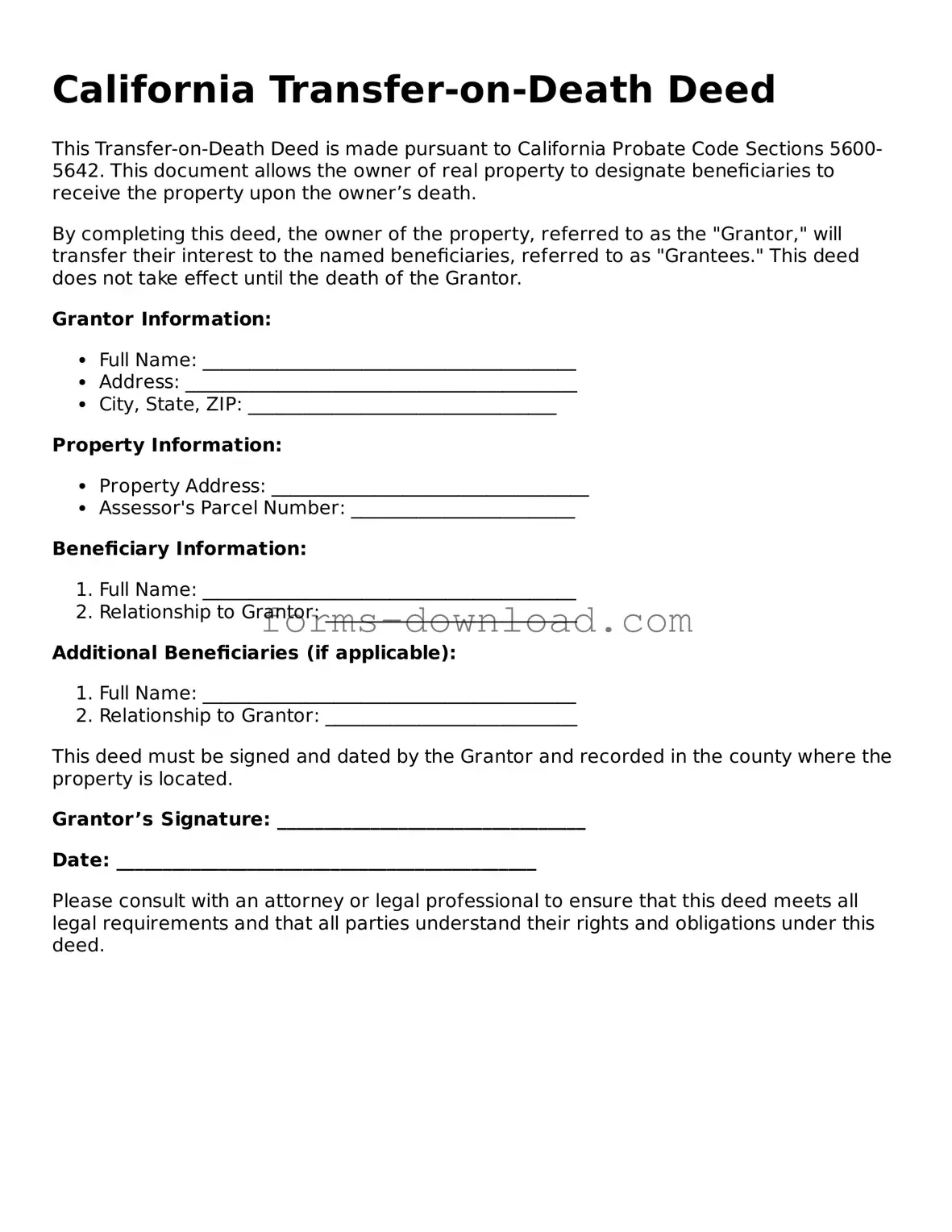California Transfer-on-Death Deed
This Transfer-on-Death Deed is made pursuant to California Probate Code Sections 5600-5642. This document allows the owner of real property to designate beneficiaries to receive the property upon the owner’s death.
By completing this deed, the owner of the property, referred to as the "Grantor," will transfer their interest to the named beneficiaries, referred to as "Grantees." This deed does not take effect until the death of the Grantor.
Grantor Information:
- Full Name: ________________________________________
- Address: __________________________________________
- City, State, ZIP: _________________________________
Property Information:
- Property Address: __________________________________
- Assessor's Parcel Number: ________________________
Beneficiary Information:
- Full Name: ________________________________________
- Relationship to Grantor: ___________________________
Additional Beneficiaries (if applicable):
- Full Name: ________________________________________
- Relationship to Grantor: ___________________________
This deed must be signed and dated by the Grantor and recorded in the county where the property is located.
Grantor’s Signature: _________________________________
Date: _____________________________________________
Please consult with an attorney or legal professional to ensure that this deed meets all legal requirements and that all parties understand their rights and obligations under this deed.
